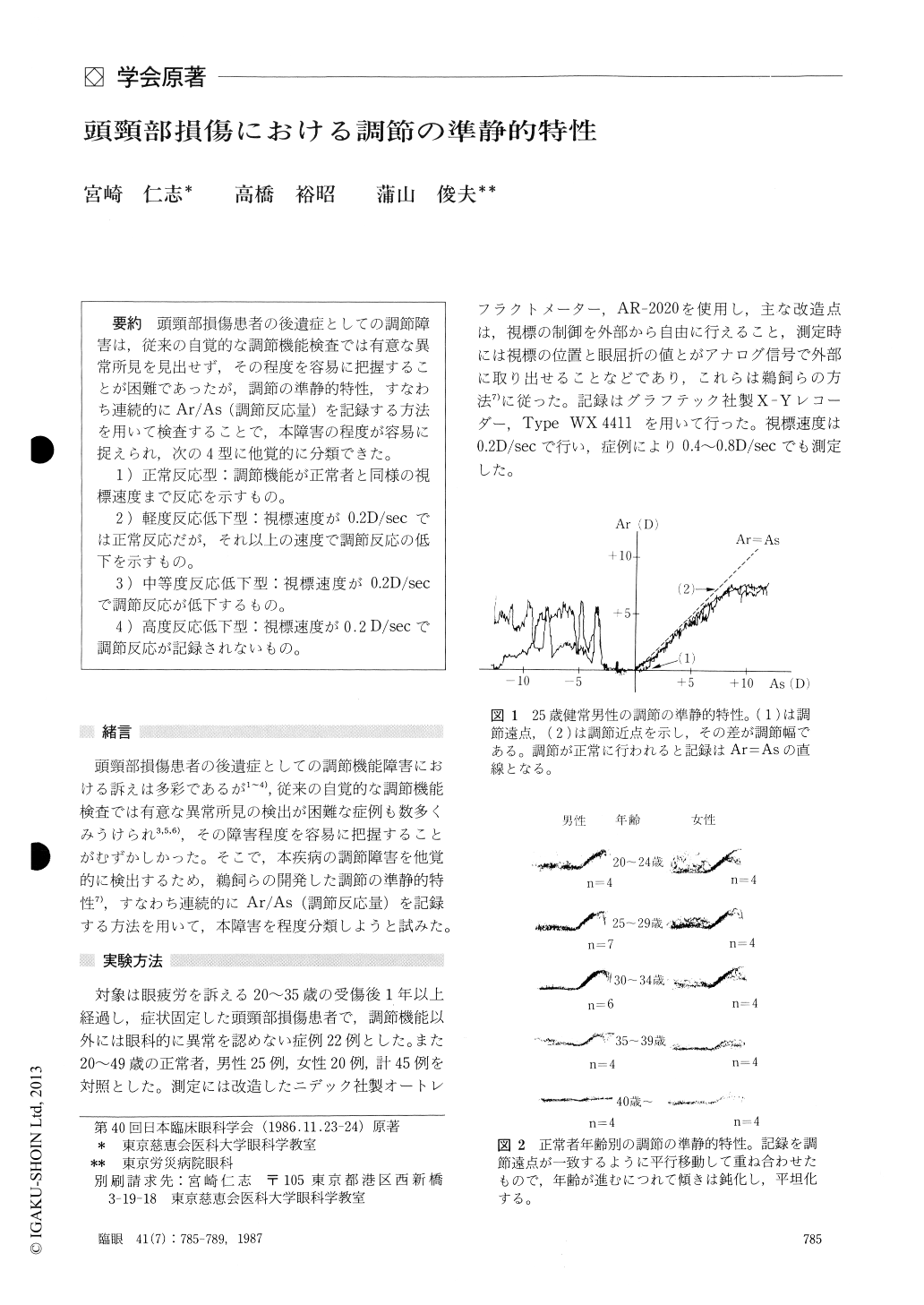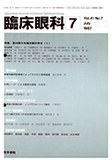Japanese
English
- 有料閲覧
- Abstract 文献概要
- 1ページ目 Look Inside
頭頸部損傷患者の後遺症としての調節障害は,従来の自覚的な調節機能検査では有意な異常所見を見出せず,その程度を容易に把握することが困難であったが,調節の準静的特性,すなわち連続的にAr/As (調節反応量)を記録する方法を用いて検査することで,本障害の程度が容易に捉えられ,次の4型に他覚的に分類できた.
1)正常反応型:調節機能が正常者と同様の視標速度まで反応を示すもの.
2)軽度反応低下型:視標速度が0.2D/secでは正常反応だが,それ以上の速度で調節反応の低下を示すもの.
3)中等度反応低下型:視標速度が0.2D/secで調節反応が低下するもの.
4)高度反応低下型:視標速度が0.2D/secで調節反応が記録されないもの.
We evaluated a series of 22 patients after head-neck blung injury with particular regard to the state of accommodation. The ages of the patients ranged from 20 to 35 years. We performed direct on-line recordings of accommodative stimulus (AS) versus accommodative response (AR).
The cases were divided into four groups accord-ing to the abnormalities in accommodative func-tion. (1) Normal response group. Accommodative response was normal at all target velocities. (2) Slightly abnormal response group. The accom-modative response was normal at 0.2D (diopter) per second but was abnormal at higher velocities. Accom-modative response showed abnormal pattern at 0.2D/sec. (4) Highly abnormal response group. Accommodative response was non-recordable at the velocity of 0.2D/sec.
Rinsho Ganka (Jpn J Clin Ophthalmol) 41(7) : 785-789, 1987

Copyright © 1987, Igaku-Shoin Ltd. All rights reserved.


